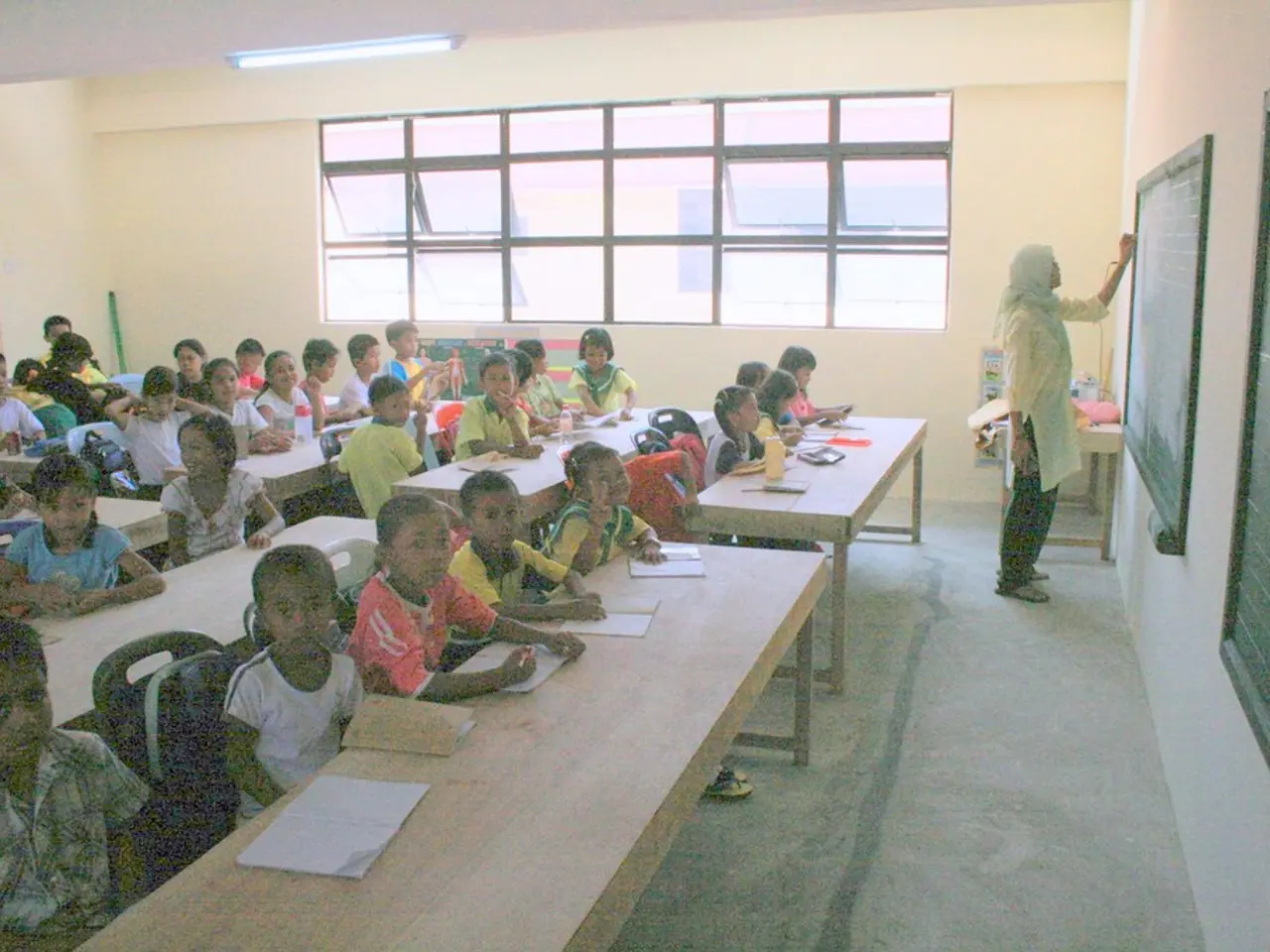Strategies for Crafting Examinations Resistant to Artificial Intelligence
Designing AI-Resistant Assessments: Empowering Students and Promoting Critical Thinking
In the modern era of technology, educators are increasingly concerned about the potential use of generative AI in academic assignments. To combat this, educators can design assessments that encourage higher-order thinking skills, personal engagement, and authentic learning experiences.
One approach is to reframe assessments to focus on open-ended, analytical, and personal reflection questions. These types of questions require connections to personal experiences or classroom discussions, making it difficult for AI tools to generate meaningful content.
Oral assessments such as viva voce or discussions can also be effective. These demand spontaneous, critical thinking and communication skills in real-time, reducing opportunities for AI-generated answers. Instructors can even consider using student self-recorded videos for oral exams, allowing for flexibility in assessment delivery.
Formative assessments that make students' thinking visible immediately, such as mini-whiteboards, live polls, or digital interactive tools, can capture authentic understanding during lessons and prevent reliance on AI outputs.
Flipping project workflows can also be beneficial. Students conduct research independently but are required to synthesize, analyze, and create during supervised, synchronous sessions where AI assistance is limited.
To foster students’ critical thinking and AI literacy, educators should consider embedding inclusive AI literacy in the curriculum. This involves teaching students how to critically engage with AI tools, disclose AI use ethically, and refine AI-generated content rather than replacing original thinking.
Designing AI-resistant curriculum and assessment designs that integrate personalized tasks or iterative assignments involving drafts and peer or instructor feedback loops can promote deeper engagement and authentic work.
Real-time assessments, such as live presentations, debates, or interactive in-class activities, provide students with opportunities to demonstrate their understanding and critical thinking at the moment, making them AI-resistant.
For a creative writing unit, students could be asked to develop a story that includes visual representations of key scenes or characters from their story, encouraging them to think about how imagery enhances storytelling.
Instructors can also ask students for multimodal deliverables to demonstrate their understanding. Breaking research projects into smaller steps, like submitting a proposal, a bibliography, an outline, a first draft, and a final draft, can highlight student critical thinking skills and make it difficult to rely solely on generative AI tools.
Lastly, it's crucial for students to have clear guidelines for each assignment about if and how they can use generative AI tools. This ensures that students understand the boundaries and expectations regarding AI usage in their assignments.
By implementing these strategies, educators can create robust defenses against the misuse of generative AI in education, balancing academic integrity, meaningful engagement, and pedagogical innovation.
- Interactive digital technology, such as live polls or digital interactive tools, can be integrated into formative assessments to capture authentic student understanding during educational-and-self-development sessions, thus promoting a shift away from relying on AI outputs.
- Educators can promote critical thinking and AI literacy in students by embedding inclusive AI literacy in the curriculum, teaching students to engage critically with AI tools, disclose AI use ethically, and refine AI-generated content, rather than replacing original thinking.
- To facilitate creative thinking and the development of original ideas, educators can design assignments that require students to employ multimodal deliverables, like a story with visual representations or a research project broken into smaller steps, making it challenging for students to rely solely on generative AI tools.




